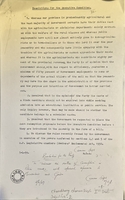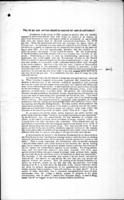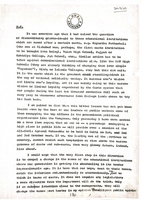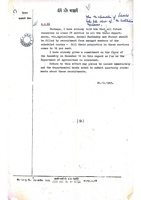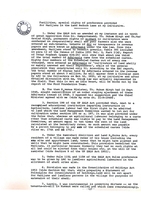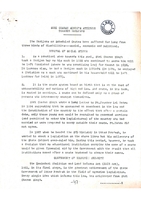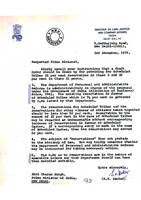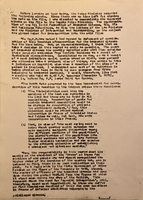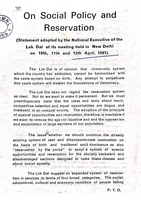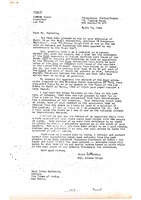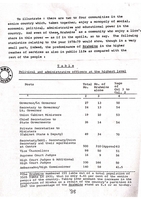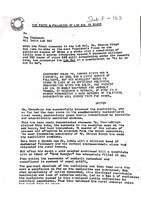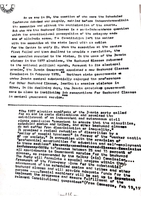Caste
“If you vote for me because I am a Jat, then throw your vote away - I do not want it!” said Chaudhary Charan Singh in his multiple rallies in the Jat dominated regions of Haryana and Uttar Pradesh. The statement best encapsulates Singh’s belief beyond mere ascriptive identities. His aversion to caste was apparent as early as 1927 when he just 25 and refused the position as Principal, Jat High School Baraut & Jat Degree College, Lakhauti unless they removed Jat from the institutions’ name.
Arya Samajist and Gandhian Influences
Chaudhary Charan Singh was deeply inspired by the teachings of Dayanand Saraswati and Mahatma Gandhi. Based on Arya Samaj’s principle that the caste system based on the concept of high and low by birth be dismantled, Charan Singh believed that qualities and merit must replace this demarcation into caste determined by birth. In a speech on the occasion of Nirvana Shatabdi of Swami Dayanand, Singh recounted, “(Swamiji) bitterly denounced the caste system with its countless taboos and privileges and exposed its malpractices in private and public life. By acknowledging merit alone as the criteria of superiority and not birth, he sought to solve the problem of social inequality which had been the cause of our repeated political subjugation”. Gandhi’s philosophical teachings and life practices with regards to social change and upliftment of Harijans had an equally significant impact on Charan Singh’s worldview. He, thus, strongly believed in the establishment of a caste-free society in which social and material progress would solely be based on merit. It is equally interesting to note that later in life, he started problematizing the very category of merit too. In the statement adopted by the National Executive of the Lok Dal at its meeting held in New Delhi on 10-12 April 1981, it was noted that the ideas and tests about merit, competitive selection and equal opportunity are bogus and irrelevant in an unequal society. The adoption of the principle of special opportunities and reservations is, therefore, inevitable in order to rectify historical injustice.
Political Interventions: Quest to Eradicate Caste
Charan Singh believed that the caste system rooted in the practice of untouchability and the notion of high and low by birth was the greatest stumbling block in the way of national solidarity and a prime reason for India’s political subjugation for centuries. He argued that since caste system perpetuates through marriages within the caste group, it is primarily through inter-caste marriages that the system can be challenged. He thus wrote a long letter to the then Prime Minister Jawaharlal Nehru in 1954 making a case for allowing only those to enter legislature or gazette services who, if married after a certain date, have done so outside their caste, or if they are bachelors, propose to do so. However, this suggestion could not materialize as Nehru believed that such intervention will go against the basic principle of individual freedom. Singh had further responded that the government cannot be said to have made any imposition as it is similar to laying down physical or educational qualification for a candidate for recruitment in All India Services. In 1967, when he was the first non-Congress Chief Minister of Uttar Pradesh heading the Samyukta Vidhayak Dal Ministry, he wanted to enact a legislation on similar lines but others in the cabinet resisted such a move. During this period, however, he implemented his long-standing demand that no educational institution carrying any caste name be given financial aid by the government. This resulted in such institutions swiftly changing their names. In the same year, he fulfilled another long-standing demand of appointing atleast one member of the State Public Services Commission from the Scheduled Castes.
Earlier too, various initiatives were undertaken by Singh in various capacities for better representation of the scheduled castes and abolition of the caste system. On February 16, 1951, Singh had also moved a resolution in a meeting of the executive of the Pradesh Congress Committee to the effect that no ‘active’ member of Congress be allowed to associate with caste institutions or organizations. Sadly, the resolution remained a dead letter as it was not observed even by important leaders of the party. In 1953, he pressed for 36% reservation for Harijans in the recruitment of 18,000 lekhpals (who replaced patwaris) in UP. From November 1954 till March 1959, Singh got several orders from Board of Revenue issued to the districts to ensure that percentage of SCs in the services of peons in the collectorates, and of lekhpals and collection amins was raised to 18%. In December 1963, he ensured that all future vacancies in Class IV services in three departments that were under his charge -agriculture, animal husbandry and forest- should be filled from amongst the SCs till their proportion in these services comes up to 18%.
Further, the election manifesto of Singh’s party – Bharatiya Kranti Dal – contained a clause under which 20 percent of the unskilled jobs in all factories both in the public and private sector as well as for the permits and licences in the gift of government which do not require any technical skill to exploit shall be reserved for the scheduled castes.
Actions for economic security of SCs
The Zamindari Abolition and Land Reforms Act of UP was certainly the greatest legislative feat of Singh’s political career. Under this law, permanent rights of cultivation were conferred by him (in the face of bitter opposition) on small and poor farmers who were entered as sub-tenants or trespassers in revenue papers and were collectively called Adhivasis under the new law. By this amendment, Harijans stood to benefit greatly as approximately 27.5% of the adhivasis belonged to the scheduled castes. Landless labour had the first right to be admitted to land which the Land Management Committee of the village wanted to let out for cultivation. It was also provided under the rules that whereas an agricultural labourer belonging to a caste other than the scheduled castes was liable to pay to the Land Management Committee a rent for such land equivalent to ten times the amount calculated at the hereditary rates, no such amount was payable by a person belonging to the scheduled castes. A provision was further made that while preparing a Statement of Principles for consolidation of holdings, land shall be set apart for SCs and landless persons in the village for extension of their abadi.
On the Issues of Backward Castes and their Representation
Caste based reservations were aimed at countering and removing social injustice and not mere economic backwardness. It is to help individuals from marginalized communities to overcome hurdles of social norms and restrictions. Only then will socially deprived communities be able to participate in the mainstream development of the socio-economic system as equals. It also contributes to the breaking up of the concurrent relationship between caste and caste-based occupation. This is one of those many instances that substantiate his evolving position on the question of caste and reservation.
Charan Singh came to be identified as the principal spokesperson for the aspirations of the backward castes of intermediate social status. He also took a strong stand in support of reservations for these backward classes. He was well aware of the monopolization of public life by the upper castes.
Professor Paul R Brass recalled, “(Singh) would now and then recite figures showing that 45 to 50 per cent of particular government services were dominated by Brahmins, Banias, Khatris, and elite castes generally whereas the backward castes had negligible representation, amounting to less than one per cent in some departments. He would point out that Harijans, because of the reservations accorded to them in government services since independence, were far better represented than the backward classes. During the period of Janata rule between 1977 and 1979 at the centre and in north India, Charan Singh supported the reservation policies for backward castes adopted by the Janata governments of UP and Bihar. However, he did not argue for proportionate representation of positions for backward castes, but thought that the reservation policy of 15 per cent for recruitment of backward castes adopted by the UP government was reasonable.”
In the year 1979 when Charan Singh was the Prime Minister, though for a short period, his Cabinet sent a resolution to President Sanjiva Reddy to implement reservations based on caste for Backward Classes in Central Services. Though the resolution could not be implemented as it was a care-taker government, the move once again proved Singh’s quest for justice for the BCs.


